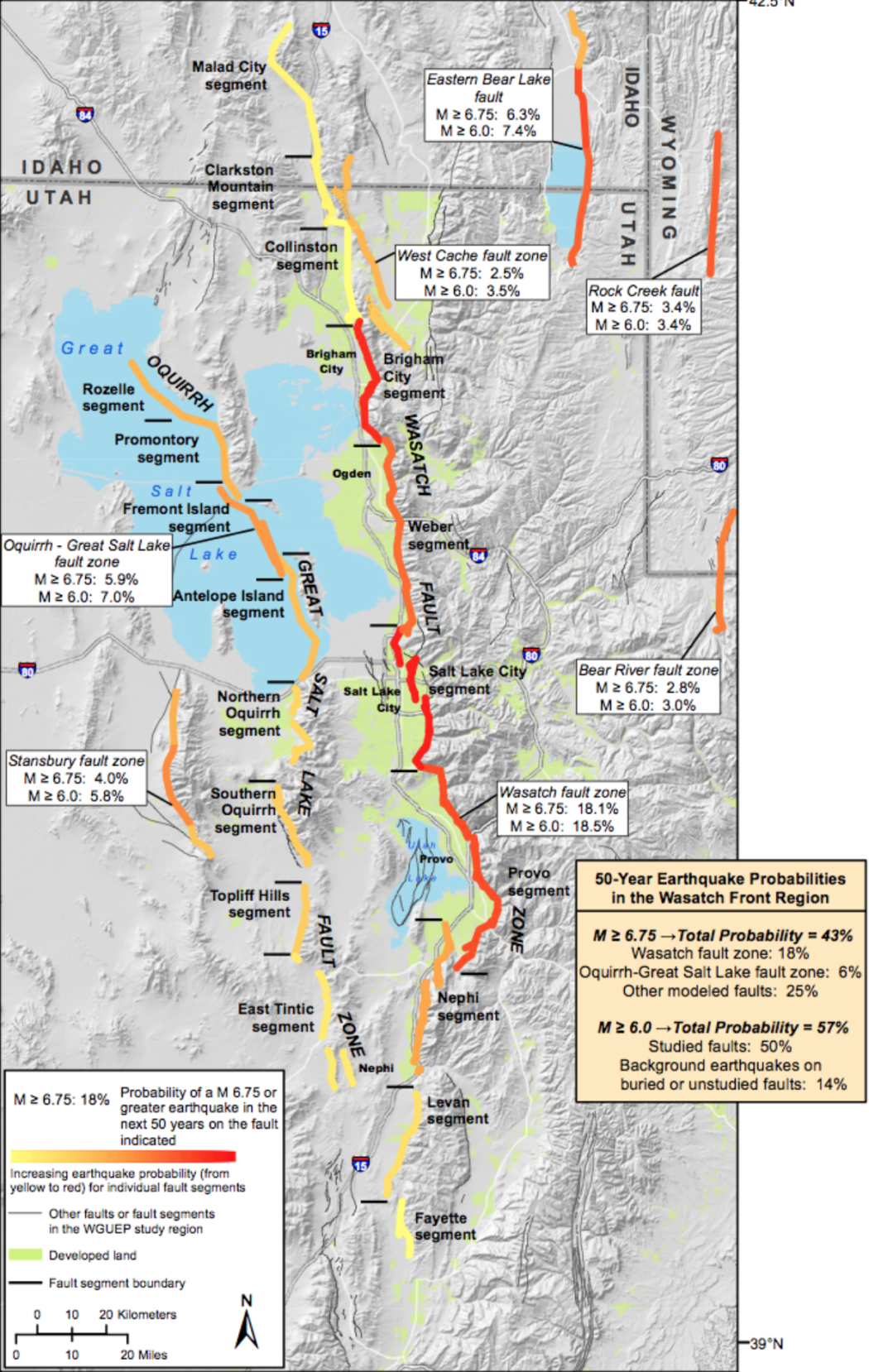Utah kicks off 2023 with an earthquake ‘swarm’
Cache County experienced multiple earthquakes during the first week of January.
The epicenter of the earthquakes was near Benson, Utah. The University of Utah Seismograph Stations reported the earthquakes were a part of a sequence beginning on Jan. 1.
The largest earthquake, with a magnitude of 3.2, occurred at 2:44 p.m. on Jan. 3. According to U.S. Geological Survey, around 450 people felt the earthquake. They encourage people to fill out a form on their website if they feel an earthquake.
Ellis Bruch, the Utah State University director of Emergency Management, said USU Public Safety did not find any damage following the earthquakes.
When an emergency, such as an earthquake, happens at USU, the public safety department does a “windshield survey.” It is a quick run-through of campus to look for any cracks or other damage.
Tony Lowry, a USU geosciences professor, said the cluster of earthquakes is called a “swarm.”
“You have a bunch of little earthquakes that are not following a bigger earthquake,” Lowry said. “It’s very, very rare for swarm activity to lead to a larger earthquake.”
Lowry said fluid flowing within the earth is the cause of an earthquake swarm. The flow can be from magmatic fluids in volcanic areas, wastewater injection by oil or gas companies or deep water production.
Brady Cox, a USU civil and environmental engineering professor, studies how to design and create earthquake-resistant buildings and infrastructure. He said these earthquakes were too small to cause damage. However, older buildings would be at higher risk of getting damaged during an earthquake.
“Any newer buildings have been designed for code,” Cox said. “Old buildings may not have been designed for high seismic activity.”
Lowry said some buildings on USU’s campus, like Old Main, have been retrofitted to withstand an earthquake better. He said it would take a much larger earthquake to cause damage to the campus. Even without buildings collapsing, people can be impacted by losing power, water or telecommunication.
Bruch said USU is working on response plans specific to each department or building. Around half of these plans are in place, and the university plans for the rest to be in place by next year. They have each employee read and get trained on the plan.
“We focus on the employee piece, kind of as the leaders of the university,” Bruch said. “The design is that if we do evacuate a building, or we have to enact any of these plans, the employees will gather students on their way out.”
“Having these little events like this every once in a while is a nice reminder that we’re in earthquake country,” Lowry said. “You want to be aware of the kinds of things that you should do in the event of an earthquake and the preparation that you should take in advance of an earthquake.”
Bruch suggested everyone can be more prepared for potential disasters by looking at exit signs, having a communication plan, having food and water and knowing the closest sheltering points.
In the event of an earthquake, Bruch recommends to “drop, cover, hold, wait for the shaking to stop and then begin your evacuation out of the building with the safest route possible.”
The Great Utah Shake Out has additional resources on earthquake preparedness.
-Carter.Ottley@usu.edu
Featured photo from Utah Department of Public Safety
*Shows Utah fault lines and probabilities of one or more earthquakes of M 6.0 or greater in Utah in the next 50 years.

